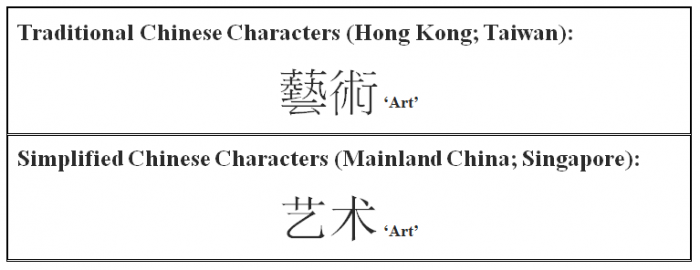Chinese is one of the most influential languages in the world. It is the most widely spoken first language on earth, with nearly 1.2 billion people speaking some form of it as their mother tongue. Businesses and individuals increasingly need to translate documents and communications into or out of Chinese. If you order a translation, we are likely to ask whether you need Simplified or Traditional Chinese. If you contact us about an interpreting assignment, we will need to know whether you require the assistance of a Mandarin or Cantonese interpreter. We know that these questions can be a little confusing so we thought it would be helpful to write an article explaining the differences between the two main varieties and two main scripts. 
Chinese varieties
Chinese is considered as a macro-language which includes different language varieties. The Encyclopaedia Britannica explains that the “Chinese languages, also called Sinitic languages, Chinese Han, [form the] principal language group of eastern Asia, belonging to the Sino-Tibetan language family. Chinese exists in a number of varieties that are popularly called dialects but that are usually classified as separate languages […]. The spoken varieties of Chinese are mutually unintelligible to their respective speakers.”
Our clients usually require language services in two main varieties: Mandarin and Cantonese. Mandarin, or Standard Chinese, is the most spoken variety, with approximately 850 million speakers. It is the only official language of the People’s Republic of China (mainland China) and Taiwan, and one of four official languages of Singapore. It is also one of the official languages of the United Nations, together with Arabic, English, French, Russian and Spanish. Mandarin has been the traditional language of the Chinese government because it is based on the Beijing variety of the language. It has been promoted for almost a century as a Chinese lingua franca and, incidentally, the word for Mandarin “Putonghua” means “common speech”.
Cantonese is the Standard variety of Yue Chinese and approximately 62 million people speak it (nearly the same as the UK population). It is primarily spoken in the province of Guangdong and widely spoken in many part of the Chinese Diaspora, particularly Hong Kong, Macau and overseas communities. For this reason, many of the English words of Chinese origin are from Cantonese, such as wok, lychee or kumquat, among others.
Written Chinese
Formal written Chinese allows communication in the Chinese-speaking world between speakers of the many Chinese variations, most of which are not mutually comprehensible orally. In other words, nationals who do not share a common spoken language are still able to understand each other via the written language. However, there are differences in written Chinese too. Nowadays there are two writing systems for Chinese characters: “Traditional” and “Simplified”.
Simplified Chinese was introduced and promoted in the People’s Republic of China by the government during the 1950’s, in an attempt to make the written language more accessible to the public and to improve literacy among the population. The Simplified character system is primarily used in mainland China and Singapore.
Traditional or classical Chinese is widely used throughout Asia (Hong Kong, Taiwan, Macau) and among Chinese populations around the world, who continued using the original traditional script.
The major difference between these two standard character sets is that the traditional characters date back to the late Han dynasty and use more strokes. The more modern simplified characters simplify most complex traditional characters to fewer strokes.
People who are literate in Simplified Chinese characters may not be literate in Traditional Chinese.
For more information and facts about the Chinese language check out these two links: http://www.oxforddictionaries.com/words/about-chinese
http://www.economist.com/blogs/economist-explains/2014/02/economist-explains-8
We hope you found this article interesting. If you require translations into or out of Chinese or any other Asian languages, please do not hesitate to contact us. You can email us at the following address: translation@aplin.co.uk or give us a call on 0800 389 6571.



